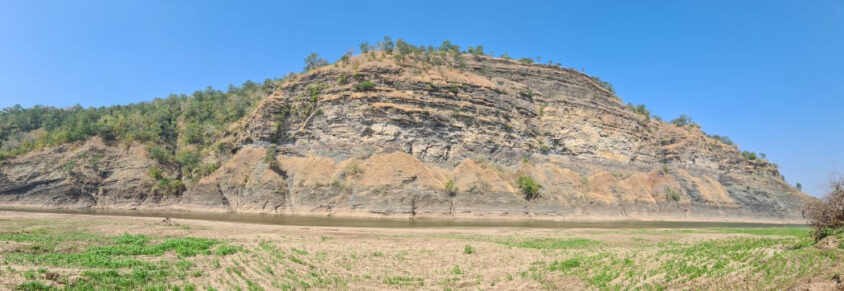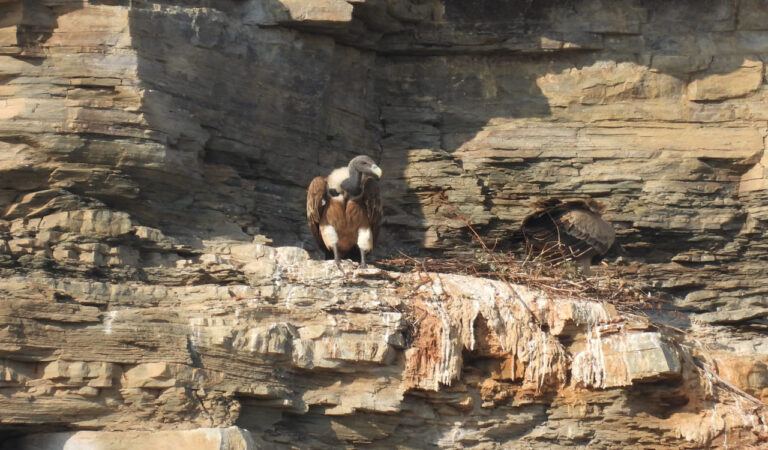The return of the scavengers is a good sign, officials said, because December is the breeding season, leading to an increase in their numbers.
Posted Date – Thu, 12/12/22 at 06:25pm

Two long-billed vultures perch among a flock of scavengers on a cliff on the outskirts of Nandigaon village, Penchikalpet mandal.Photo: Rajesh Kanney
Kumram Bheem Asifabad: The endangered long-billed Indian vulture (Gyps indicus), known locally as Palarapu Gutta, has returned to its perch on the cliffs on the outskirts of Nandigaon village in Penchikalpet mandal after a three-year hiatus. Their return has cheered forest officials and conservationists here.
After heavy rains in 2019, the nest collapsed and the approximately 20 adult bald eagles and 10 chicks that inhabited the colony were forced to leave their habitat. They migrate to a vulture sanctuary near Kamalapur in the Gadchiroli district of Maharashtra state. However, three pairs have since returned to the scene and were spotted as they were flying around the cliff.
“A few days ago, the department’s field staff spotted three pairs of vultures. Special measures are being taken to protect the birds. Sufficient food is prepared for them. Also, local peace is ensured by avoiding noise made by humans,” G Dinesh Kumar, district forest officer in charge, told Telangana Today.
The return of the scavengers is a good sign, officials said, because December is the breeding season, leading to an increase in their numbers. These birds inhabit the hilly regions of central and southern India. They are classified as “critically endangered” by the International Union for Conservation of Nature (IUCN). They feed on animal carcasses and often travel in groups. They have a bald head, very broad wings and a short tail.

On the outskirts of Nandigaon village in Penchikalpet mandal, a cliff view locally known as Palarapu ancient pagoda.Photo: Rajesh Kanney
Bald eagles play a vital role in ecosystems
According to biologists, vultures play an important role in ecosystems by eating dead and decomposing carcasses in the wild and domestically. However, officials say their numbers have plummeted as a result of the carcasses of domesticated animals consuming painkillers containing diclofenac.
Back in 2013, forest officials found a habitat for 10 long-billed vultures at the Palarapu Guttalu (cliff) at the confluence of Peddavagu and Pranahita. Started in January 2015. The project has appointed a field biologist and five bird trackers.
